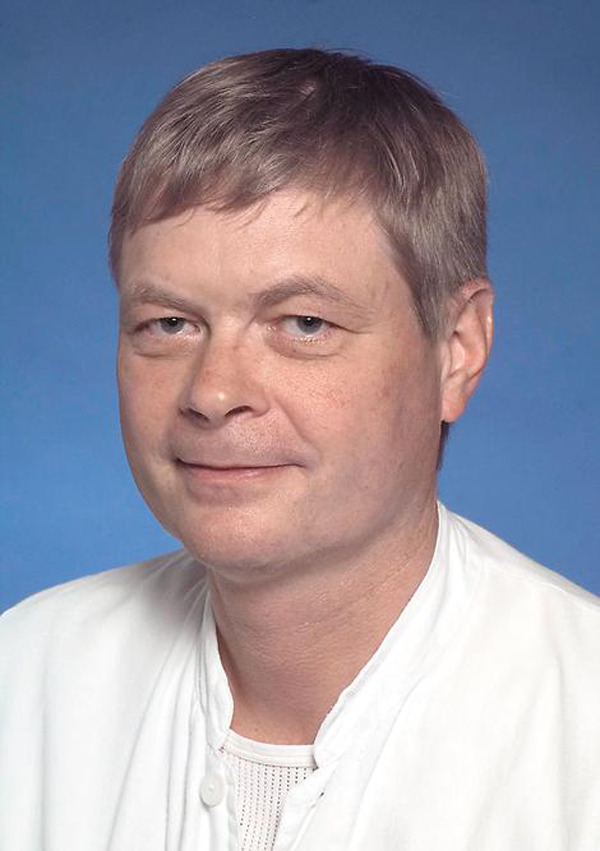Niels Quist
Professor, DMSci, Chief Surgeon
Surgical Department A
Odense University Hospital
DK-5000 Odense C
Denmark
E-mail Niels Quist

Professor, DMSci, Chief Surgeon
Surgical Department A
Odense University Hospital
DK-5000 Odense C
Denmark
E-mail Niels Quist
What year and how did you start using Microdialysis (MD)?
– It started several years ago with studies in pigs. Graded and controlled ischemia of segments of small intestines was investigated for changes in L/P-ration and glucose concentration. The MD catheter was placed in the submucosal space and the results showed an excellent correlation between the grade of ischemia and changes in L/P-ration and glucose concentration. However, the placement of the catheters in the submucosal layer was difficult and tedious and not considered suitable for the clinical situation. Later studies in animals have shown a similar correlation between ischemia and changes in L/P-ration and glucose concentration with catheters placed in close proximity to the involved intestinal loops, which encouraged us to start clinical studies.
How many gastro surgery operations do you conduct every year in your hospital?
– Our hospital is a large university hospital with primary referral covering a population on 350.000 inhabitants and a tertial referral centre for the southern part of Denmark. More than 3.000 major laparatomies are performed each year and a great number of laparoscopic surgeries. In addition our department covers paediatric surgery for the western part of Denmark covering approximately 3 million inhabitants.
You have several ongoing microdialysis projects. Can you please give a short description of them?
– We have recently finished a project with intraperitoneal microdialysis in patients undergoing low anterior resection for recto-sigmoideal cancer. The results showed, that abnormal values in L/P-ratio and glucose concentration in patients with anastomotic leakage several hours or days before the patient developed clinical symptoms on leakage. The method with peritoneal microdialysis thus has the potential of early warning of leakage giving the possibility for early intervention and decreases the risk for severer complications. However, larger scale studies are necessary to confirm these preliminary findings.Recently we have started a similar project in patients undergoing oesophageal resection for cancer and with similar preliminary results.
Finally we have started a project with intestinal surveillance in preterm babies undergoing surgery for necrotizing enterocolitis. This will in the future be expanded to include babies operated for gastoschisis and omphalocele.
In addition studies in animals on the physiology of intestinal ischemia and intraperitoneal inflammation is planned for next spring.
In total how many patients have you monitored with microdialysis?
– Approximately 175 patients, which all have been included in clinical trials and projects.
What substances are you analyzing?
– To our experience the most interesting parameters are lactate, pyruvate and glucose concentration. In our animal studies we intend to include measurements of several cytokines.Do you consider Microdialysis monitoring following gastro surgery feasible in a clinical routine setting?
Do you consider Microdialysis monitoring following gastro surgery feasible in a clinical routine setting?
– Yes, and we have not observed any serious complications or adverse events in any of our patients included in the studies. The catheters developed for peritoneal microdialysis is easy to place a fix in the areas of interest for measurements. Bedside analysis gives the opportunity for continuous monitoring and early intervention in case of abnormalities. However, better systems to fix the pumps to the patient should be an area of interest for the developer in order to give a better patient and nursing compliance.
How do you see the future use of Microdialysis within gastro surgery?
– Surveillance of the peritoneal cavity with the possibility to early intervention in order to decrease the consequences of various serious complications. Another possibility is physiological studies in a better understanding of the processes in peritoneal inflammation and final there is a possibility to study pharmacodynamics of the peritoneal cavity in various situations as e.g. severe peritonitis.